 The United Nations International Panel on Climate Change (IPCC) has just published its most comprehensive report so far. It finds that ‘human activities, principally through emissions of greenhouse gases, have unequivocally caused global warming’. This has led to widespread and rapid changes in climate and biodiversity and to more extreme weather patterns, such as droughts, floods and hurricanes. What is more, the distribution of these effects is uneven, with communities who have contributed the least to current climate change being disproportionately affected.
The United Nations International Panel on Climate Change (IPCC) has just published its most comprehensive report so far. It finds that ‘human activities, principally through emissions of greenhouse gases, have unequivocally caused global warming’. This has led to widespread and rapid changes in climate and biodiversity and to more extreme weather patterns, such as droughts, floods and hurricanes. What is more, the distribution of these effects is uneven, with communities who have contributed the least to current climate change being disproportionately affected.
At the 2015 COP21 climate change conference in Paris (see also), it was agreed to adopt policies to limit the increase in global temperatures to ‘well below’ 2°C above pre-industrial levels and to make an effort to limit it to 1.5°C. Global temperatures have already risen 1.1°C above 1850–1900 levels and are set to reach 1.5°C in the early 2030s. Every increment of global warming will intensify ‘multiple and concurrent hazards’.
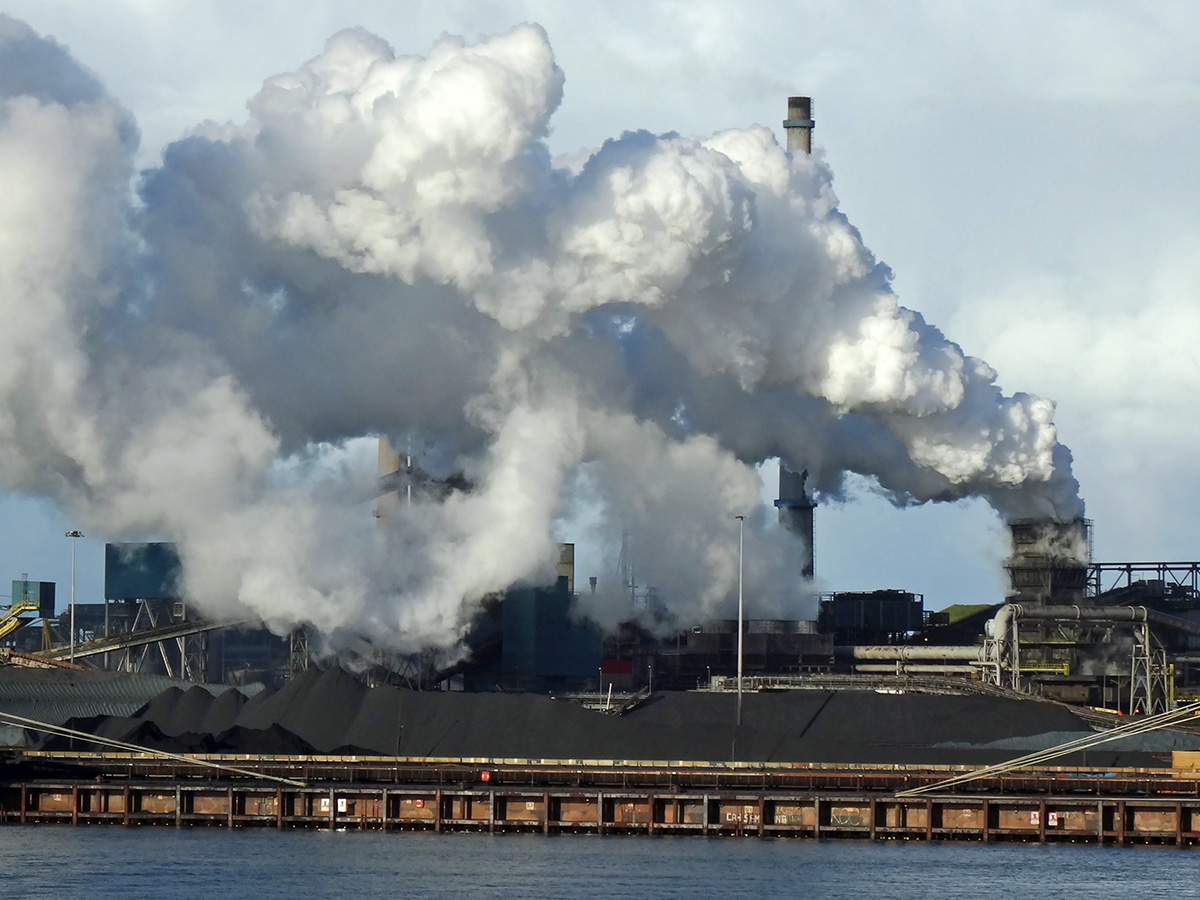 Deep, rapid and sustained reductions in emissions would slow down the rise in global temperatures, but even with such reductions, temperatures will still exceed 1.5°C in the next few years and, even under the best-case scenario, would not fall below 1.5°C again until the end of the 21st century. Under more pessimistic scenarios, global temperatures could rise to 2.7°C above pre-industrial levels by the end of the century under an intermediate greenhouse gas emissions scenario and to 4.4°C under a very high emissions scenario. Anything above 2°C would be likely to have catastrophic effects. The longer countries wait to take action, the greater the rise in global temperatures and hence the greater the damage and the more costly it will be to rectify it.
Deep, rapid and sustained reductions in emissions would slow down the rise in global temperatures, but even with such reductions, temperatures will still exceed 1.5°C in the next few years and, even under the best-case scenario, would not fall below 1.5°C again until the end of the 21st century. Under more pessimistic scenarios, global temperatures could rise to 2.7°C above pre-industrial levels by the end of the century under an intermediate greenhouse gas emissions scenario and to 4.4°C under a very high emissions scenario. Anything above 2°C would be likely to have catastrophic effects. The longer countries wait to take action, the greater the rise in global temperatures and hence the greater the damage and the more costly it will be to rectify it.
‘For any given future warming level… projected long-term impacts are up to multiple times higher than currently observed (high confidence). Risks and projected adverse impacts and related losses and damages from climate change escalate with every increment of global warming (very high confidence). Climatic and non-climatic risks will increasingly interact, creating compound and cascading risks that are more complex and difficult to manage (high confidence).’ (Paragraph B2)
But the report is not all ‘doom and gloom’. It is possible to limit global warming to 1.5°C or only a little over by making rapid, deep and, in most cases, immediate greenhouse gas emissions reductions in all sectors and reaching net zero emissions in the early 2050s. Science and technology have the answers – answers that are now much cheaper and more available than back in 2015 when the 1.5°C target was agreed. But what it does require is doing ‘everything, everywhere, all at once’. And that requires political will and the right economic incentives.
The politics and economics of achieving net zero
In terms of the politics, there is general global agreement by governments about the likely effects of climate change. And most governments agree that action needs to be taken. However, there are three key political problems.
The first is that the costs of action will be borne now, while the benefits of action will accrue over a much longer period of time. This links to the second problem – the mismatch between the lives of governments and the long-term effects of climate change. If governments put off doing anything now and merely promise that something will be done in the future, they will not have to take unpopular actions, such as raising taxes on energy, private transport and certain goods or banning various activities. Future governments will have to sort things out, by when, although the problems will be greater, the existing politicians will no longer be in power.
 The third problem concerns the distribution of the costs and benefits of action. The major emitters of carbon are the rich countries, while the major sufferers are poor people in countries subject to drought, flooding and rising sea levels. Not surprisingly, who should cut down on emissions and pay for the mitigation necessary in many of the poorer countries is a difficult political issue, which is why it’s much easier to say what needs to be achieved overall than precisely what measures should be taken by which countries.
The third problem concerns the distribution of the costs and benefits of action. The major emitters of carbon are the rich countries, while the major sufferers are poor people in countries subject to drought, flooding and rising sea levels. Not surprisingly, who should cut down on emissions and pay for the mitigation necessary in many of the poorer countries is a difficult political issue, which is why it’s much easier to say what needs to be achieved overall than precisely what measures should be taken by which countries.
These problems reflect the fact that many, if not most, of the environmental costs of production and consumption are external costs – costs borne, not by the direct producer or consumer, but by other people at other places and/or in the future.
Nevertheless, the relative costs of moving to greener production and consumption are falling. The costs of renewable energy, including solar power, onshore and offshore wind and hydroelectric power are falling relative to that generated from fossil fuels. At the same time, the take up of electric cars is likely to continue rising as battery technology improves. This does, of course, require an increase in charging infrastructure. Domestic heat pump technology is improving and home insulation methods are becoming more efficient.
Persuading consumers and firms to take account of environmental externalities could in part be achieved by education. It makes it much easier for politicians to take appropriate action now if their populations are on board. There has been increasing awareness over the years of the environmental impact of people’s actions. People have become more willing to take responsibility for the world that future generations will inherit. This is helped both by education in schools and colleges and by frequent items in the media.
But incentives also have a major part to play. To internalise environmental externalities, external costs could be taxed and external benefits subsidised.
The effect of a carbon tax on production
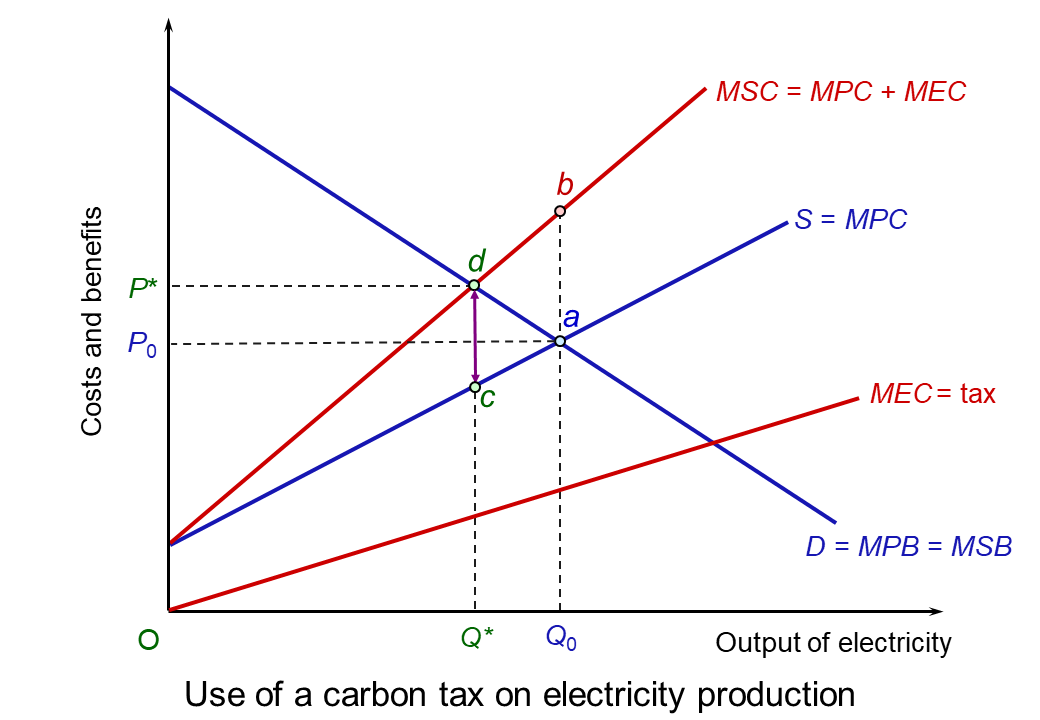 The use of taxes to reduce activities with negative environmental externalities is illustrated in the diagram (click here for a PowerPoint). It takes the case of carbon emissions from coal-fired electricity generation in a large country. To keep the analysis simple, it is assumed that all electricity in the country is generated from coal-fired power stations and that there are many such power stations, making the market perfectly competitive.
The use of taxes to reduce activities with negative environmental externalities is illustrated in the diagram (click here for a PowerPoint). It takes the case of carbon emissions from coal-fired electricity generation in a large country. To keep the analysis simple, it is assumed that all electricity in the country is generated from coal-fired power stations and that there are many such power stations, making the market perfectly competitive.
It is assumed that all the benefits from electricity production accrue solely to the consumers of electricity (i.e. there are no external benefits from consumption). Marginal private and marginal social benefits of the production of electricity are thus the same (MPB = MSB). The curve slopes downwards because, with a downward-sloping demand for electricity, higher output results in a lower marginal benefit (diminishing marginal utility).
Competitive market forces, with producers and consumers responding only to private costs and benefits, will result in a market equilibrium at point a in the diagram: i.e. where demand equals supply. The market equilibrium price is P0 while the market equilibrium quantity is Q0. However the presence of external costs in production means that MSC > MPC. In other words, MEC = b – a.
The socially optimal output would be Q* where P = MSB = MSC, achieved at the socially optimal price of P*. This is illustrated at point d and clearly shows how external costs of production in a perfectly competitive market result in overproduction: i.e. Q0 > Q*. From society’s point of view, too much electricity is being produced and consumed.
If a carbon tax of d – c is imposed on the electricity producers, it will now be in producers’ interests to produce at Q*, where their new private marginal costs (including tax) equals their marginal private benefit.
But this brings us back to the politics of measures to reduce emissions. People do not like paying higher taxes. In his latest Budget, the UK Chancellor, Jeremy Hunt, decided not to raise fuel duties by the 12p that had been previously planned, despite fuel prices having recently fallen. Meanwhile, charging prices for electric cars have risen.
Other economic measures
 A simpler method for dealing with environmental externalities is ban certain activities that omit CO2. For example, in the UK there will be a ban on the sale of new petrol and diesel cars and vans from 2030 (with the exception of some low-emission hybrids until 2035). In the EU there will be a similar ban from 2035. Clearly, such measures are only suitable when there are non-emitting alternatives.
A simpler method for dealing with environmental externalities is ban certain activities that omit CO2. For example, in the UK there will be a ban on the sale of new petrol and diesel cars and vans from 2030 (with the exception of some low-emission hybrids until 2035). In the EU there will be a similar ban from 2035. Clearly, such measures are only suitable when there are non-emitting alternatives.
Another alternative is a cap-and-trade system, such as the European Emissions Trading Scheme. It involves setting quotas for emissions and allowing firms which manage to cut emissions to sell their surplus permits to less efficient firms. This puts a price pressure on firms to be more efficient. But the quotas (the ‘cap’) must be sufficiently tight if emissions are going to be cut to desired levels. Nevertheless, it is an efficient way of cutting emissions as it gives a competitive advantage to low-emission producers.
Conclusion
If the problem of global warming is to be limited to 1.5°C, or only very little above, multiple solutions will need to be found and there must be a combination of political will, economic incentives and the mobilisation of scientific and technical know-how. As the Secretary-General of the United Nations, António Guterres, stated in launching the new report:
This report is a clarion call to massively fast-track climate efforts by every country and every sector and on every timeframe. In short, our world needs climate action on all fronts – everything, everywhere, all at once.
Report
Videos
Articles
- Climate damage is worsening faster than expected, but there’s still reason for optimism – 4 essential reads on the IPCC report
The Conversation, Stacy Morford at al (20/3/23)
- UN climate scientists are running out of ways to warn us
Vox, Rebecca Leber and Umair Irfan (20/3/23)
- Expert reaction to the AR6 synthesis report, as published by the IPCC
Science Media Centre (20/3/23)
- ‘The climate time-bomb is ticking’: The world is running out of time to avoid catastrophe, new UN report warns
CNN, Laura Paddison (20/3/23)
- UN climate report: Scientists release ‘survival guide’ to avert climate disaster
BBC News, Matt McGrath and Georgina Rannard (20/3/23)
- Five things we’ve learned from UN climate report
BBC News, Matt McGrath (20/3/23)
- Climate change: Can we really take CO2 back out the air?
BBC Future, Jocelyn Timperley (21/3/23)
- Scientists deliver ‘final warning’ on climate crisis: act now or it’s too late
The Guardian, Fiona Harvey (20/3/23)
- From climate change ‘certainty’ to rapid decline: a timeline of IPCC reports
The Guardian, Damian Carrington (20/3/23)
- Humanity at the climate crossroads: highway to hell or a livable future?
The Guardian, Damian Carrington (20/3/23)
 IPCC report: Here’s how we can defuse the ‘ticking time bomb’ of climate change
IPCC report: Here’s how we can defuse the ‘ticking time bomb’ of climate changeEuronews, Rosie Frost (21/3/23)
- Now or never: One of the biggest climate reports ever shows time is running out
NBC News, Evan Bush and Denise Chow (20/3/23)
Questions
- Why might countries not do ‘everything, everywhere, all at once’ to avert climate change?
- What might an optimist conclude from the ICC report?
- To what extent is climate change an economic problem?
- On a diagram similar to the one above, show how a subsidy could be used to internalise positive externalities.
- How might countries reduce the consumption of fossil fuels in the most efficient way? Are they likely to want to do this? Explain.
- Is a ‘cap-and-trade’ (tradable permits) system (a) an effective means of reducing emissions; (b) an efficient system?
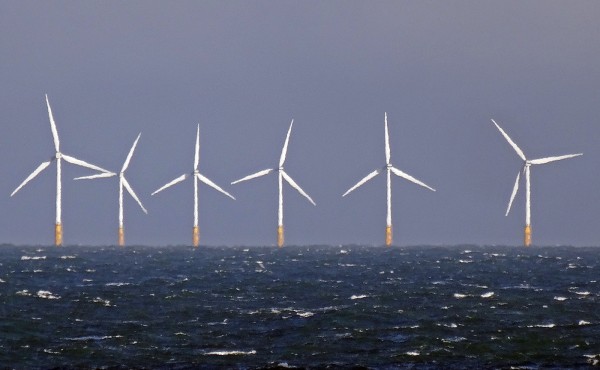 After two weeks of negotiations between the 195 countries attending the COP21 climate change conference in Paris, a deal has been reached on tackling climate change. Although the deal still has to be ratified by countries, this is a major step forward in limiting global warming. Before it can formally come into force, it must have been ratified by at least 55 countries, accounting for at least 55% of global greenhouse gas emissions.
After two weeks of negotiations between the 195 countries attending the COP21 climate change conference in Paris, a deal has been reached on tackling climate change. Although the deal still has to be ratified by countries, this is a major step forward in limiting global warming. Before it can formally come into force, it must have been ratified by at least 55 countries, accounting for at least 55% of global greenhouse gas emissions.
The deal goes much further than previous agreements and includes the following:
- A limit on the increase in global temperatures to ‘well below’ 2°C above pre-industrial levels and efforts pursued to limit it to 1.5°C.
- A recognition that the pledges already made ahead of the conference by 186 countries and incorporated into the agreement are insufficient and will only limit global temperature rise to 2.7°C at best.
- Countries to update their emissions reductions commitments every five years – the first being in 2020. Such revised commitments should then be legally binding.
- A global ‘stocktake’ in 2023, and every five years thereafter, to monitor countries’ progress in meeting their commitments and to encourage them to make deeper cuts in emissions to reach the 1.5°C goal. This requires a process of measurement and verification of countries’ emissions.
- To reach a peak in greenhouse gas emissions as soon as possible and then to begin reducing them and to achieve a balance between sources and sinks of greenhouse gases (i.e. zero net emissions) in the second half of this century.
- Developed countries to provide the poorest developing countries with $100bn per year by 2020 to help them reduce emissions. This was agreed in Copenhagen, but will now be continued from 2020 to 2025, and by 2025 a new goal above $100bn per year will be agreed.
- The development of market mechanisms that would award tradable credits for green projects and emissions reductions.
- A recognition that the ‘loss and damage’ associated with climate-related disasters can be serious for many vulnerable developing countries (such as low-lying island states) and that this may require compensation. However, there is no legal liability on developed countries to provide such compensation.
Perhaps the major achievement at the conference was a universal recognition that the problem of global warming is serious and that action needs to be taken. Mutual self interest was the driving force in reaching the agreement, and although it is less binding on countries than many would have liked, it does mark a significant step forward in tackling climate change.
But why did the conference not go further? Why, if there was general agreement that global warming should be tackled and that global temperature rise should ideally be capped at 1.5°C, was there not a binding agreement on each country to apply this cap?
There are two reasons.
First, it is very difficult to predict the exact relationship, including its timing, between emissions and global temperature rise. Even if you could make limits to emissions binding, you could not make global temperature rise binding.
 Second, even if there is general agreement about how much emissions should be reduced, there is no general agreement on the distribution of these reductions. Many countries want to do less themselves and others to do more. More specifically, poor countries want rich countries to do all the cutting while many continue to build more coal-fired power stations to provide the electricity to power economic development. The rich countries want the developing countries, especially the larger ones, such as China, India and Brazil to reduce their emissions, or at least the growth in their emissions.
Second, even if there is general agreement about how much emissions should be reduced, there is no general agreement on the distribution of these reductions. Many countries want to do less themselves and others to do more. More specifically, poor countries want rich countries to do all the cutting while many continue to build more coal-fired power stations to provide the electricity to power economic development. The rich countries want the developing countries, especially the larger ones, such as China, India and Brazil to reduce their emissions, or at least the growth in their emissions.
Then there is the difference between what countries vaguely pledge at a global conference and what they actually do domestically. Many developed countries are keen to take advantage of currently cheap fossil fuels to power economic growth. They are also still investing in alternative sources of fossil fuels, such as through fracking.
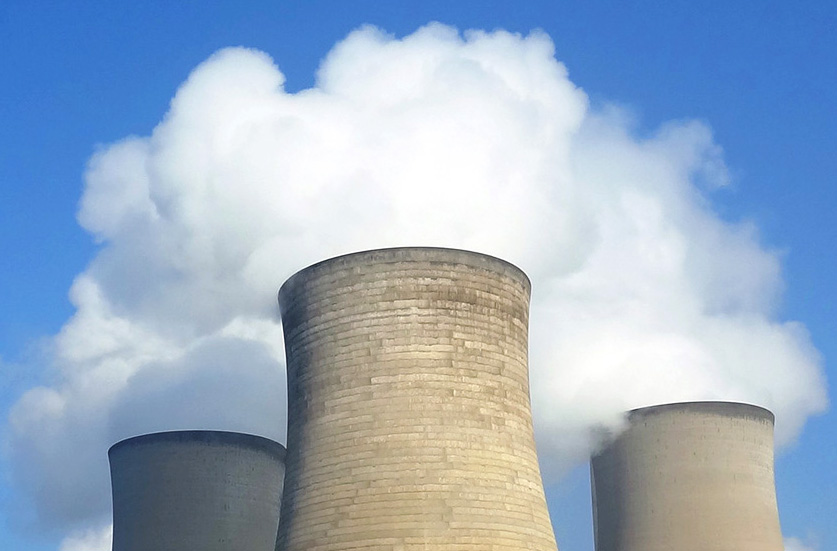 As we said in the previous blog, game theory can shed some useful insights into the nature and outcome of climate negotiations. ‘The global optimum may be for a strong agreement, binding on all countries. The Nash equilibrium, however, may be a situation where countries push for their own interests at the expense of others, with the final agreement being much more minimalistic.’
As we said in the previous blog, game theory can shed some useful insights into the nature and outcome of climate negotiations. ‘The global optimum may be for a strong agreement, binding on all countries. The Nash equilibrium, however, may be a situation where countries push for their own interests at the expense of others, with the final agreement being much more minimalistic.’
‘Minimalistic’ may be too strong a description of the outcomes of the Paris conference. But they could have been stronger. Nevertheless, judged by the outcomes of previous climate conferences, the deal could still be described as ‘historic’.
Videos
 With landmark climate accord, world marks turn from fossil fuels Reuters (13/12/15)
With landmark climate accord, world marks turn from fossil fuels Reuters (13/12/15)
 COP21 climate change summit reaches deal in Paris BBC News (13/12/15)
COP21 climate change summit reaches deal in Paris BBC News (13/12/15)
 COP21: Paris climate deal is ‘best chance to save planet’ BBC News (13/12/15)
COP21: Paris climate deal is ‘best chance to save planet’ BBC News (13/12/15)
 COP21: Climate change deal’s winners and losers BBC News, Matt McGrath (13/12/15)
COP21: Climate change deal’s winners and losers BBC News, Matt McGrath (13/12/15)
 The Five Key Decisions Made in the UN Climate Deal in Paris Bloomberg, video: Nathaniel Bullard; article: Ewa Krukowska and Alex Morales (12/12/15)
The Five Key Decisions Made in the UN Climate Deal in Paris Bloomberg, video: Nathaniel Bullard; article: Ewa Krukowska and Alex Morales (12/12/15)
 The key factors in getting a deal in Paris BBC News on YouTube, Tom Burke (13/12/15)
The key factors in getting a deal in Paris BBC News on YouTube, Tom Burke (13/12/15)
Articles
COP21 agreement: All you need to know about Paris climate change deal Hindustan Times, Chetan Chauhan (13/12/15)
COP21: Paris agreement formally adopted Financial Times, Pilita Clark and Michael Stothard (12/12/15)
Let’s hail the Paris climate change agreement and get to work Financial Times, Jeffrey Sachs (12/12/15)
COP21: Public-private collaboration key to climate targets Financial Times, Nicholas Stern (13/12/15)
Paris climate change agreement: the deal at a glance The Telegraph, Emily Gosden (12/12/15)
Climate Accord Is a Healing Step, if Not a Cure New York Times, Justin Gillis (12/12/15)
Paris Agreement Ushers in End of the Fossil Fuel Era Slate, Eric Holthaus (12/12/15)
Paris Agreement: the reaction Business Green, James Murray and Jessica Shankleman (12/12/15)
World’s First Global Deal to Combat Climate Change Adopted in Paris Scientific American, David Biello (12/12/15)
COP21: Paris climate deal ‘our best chance to save the planet’, says Obama Independent, Tom Bawden (13/12/15)
Grand promises of Paris climate deal undermined by squalid retrenchments The Guardian, George Monbiot (12/12/15)
Paris Agreement on climate change: the good, the bad, and the ugly The Conversation, Henrik Selin and Adil Najam (14/12/15)
COP21: James Hansen, the father of climate change awareness, claims Paris agreement is a ‘fraud’ Independent, Caroline Mortimer (14/12/15)
Paris climate agreement: More hot air won’t save us from oblivion Sydney Morning Herald, Peter Hartcher (15/12/15)
Draft Agreement
Adoption of the Paris Agreement United Nations Framework Convention on Climate Change (12/12/15)
Questions
- Could the market ever lead to a reduction in greenhouse gas emissions? Explain.
- What are the main strengths and weaknesses of the Paris agreement?
- Is it in rich countries’ interests to help poorer countries to achieve reductions in greenhouse gas emissions?
- How might countries reduce the production of fossil fuels? Are they likely to want to do this? Explain.
- Is a ‘cap and trade’ (tradable permits) system (a) an effective means of reducing emissions; (b) an efficient system?
- What is the best way of financing investment in renewable energy?
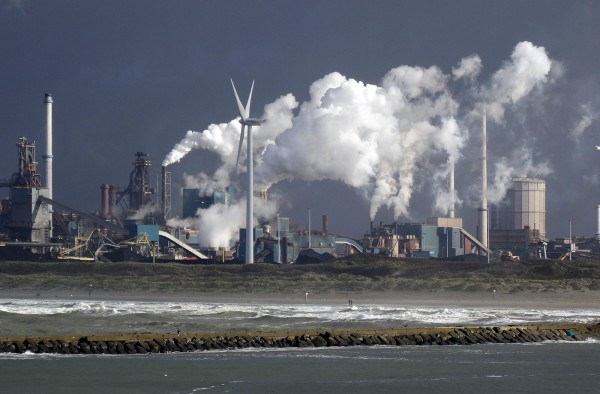 The Paris Climate Change Conference (COP21) is under way. At the opening on November 30, 150 Heads of State gathered in Paris, most of whom addressed the conference. With representatives from 195 countries and observers from a range of organisations, the conference is set to last until 11 December. Optimism is relatively high that a legally binding and universal agreement will be reached, with the aim of keeping global warming below 2°C – what is generally regarded as a ‘safe’ limit.
The Paris Climate Change Conference (COP21) is under way. At the opening on November 30, 150 Heads of State gathered in Paris, most of whom addressed the conference. With representatives from 195 countries and observers from a range of organisations, the conference is set to last until 11 December. Optimism is relatively high that a legally binding and universal agreement will be reached, with the aim of keeping global warming below 2°C – what is generally regarded as a ‘safe’ limit.
But although it is hoped that a successor to the Kyoto Protocol of 1997 will be put in place, there are many problems in getting so many countries to agree. They may all wish to reduce global warming, but there is disagreement on how it should be achieved and how the burden should be shared between countries.
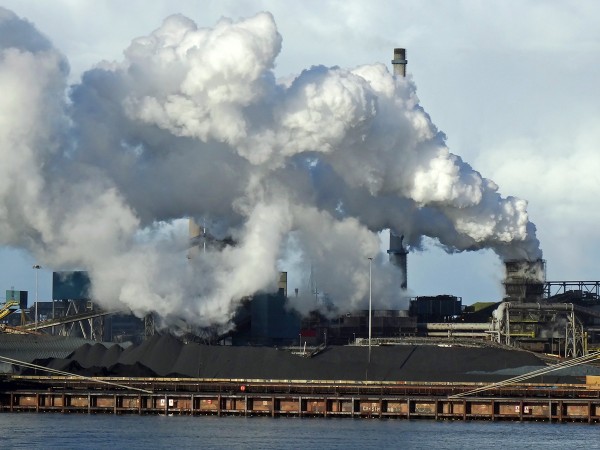 There are several difficult economic issues in the negotiations. The first is the size and impact of the external costs of emissions. When a country burns fossil fuels, the benefits are almost entirely confined to residents of that county. However, the environmental costs are largely external to that country and only a relatively small fraction is borne by that country and hardly at all by the polluters themselves, unless there is a carbon tax or other form or penalty in place. The problem is that the atmosphere is a common resource and without collective action – national or international – it will be overused.
There are several difficult economic issues in the negotiations. The first is the size and impact of the external costs of emissions. When a country burns fossil fuels, the benefits are almost entirely confined to residents of that county. However, the environmental costs are largely external to that country and only a relatively small fraction is borne by that country and hardly at all by the polluters themselves, unless there is a carbon tax or other form or penalty in place. The problem is that the atmosphere is a common resource and without collective action – national or international – it will be overused.
The second problem is one of distribution. Politicians may agree in principle that a solution is necessary which is equitable between nations, but there is considerable disagreement on what is meant by ‘equitable’ in this context. As the third Guardian article below puts it:
The most important hurdle could be over whether industrialised countries like the US, UK and Japan, which have contributed the most to the historical build-up of emissions, should be obliged to cut more than developing countries. India, on behalf of many poor countries, will argue that there must be “differentiation” between rich and poor; but the US wants targets that are applicable to all. A collision is inevitable.
A third problem is that of uncertainty. Although there is general agreement among scientists that human action is contributing to global warming, there is less agreement on the precise magnitude of the causal relationships. There is also uncertainty over the likely effects of specific emissions reductions. This uncertainty can then be used by governments which are unwilling to commit too much to emissions reductions.
 A fourth difficulty arises from the intertemporal distribution of costs and benefits of emissions reductions. The costs are born immediately action is taken. Carbon taxes or charges, or subsidies to renewables, or caps on emissions, all involve higher energy prices and/or higher taxes. The flows of benefits (or lower costs), however, of reduced emissions are not likely to be fully experienced for a very long time. But governments, whether democratic or dictatorships, tend to have a relatively short time horizon, governed by the electoral cycle or the likelihood of staying in power. True, governments may not be solely concerned with power and many politicians may have genuine desires to tackle climate change, but their political survival is still likely to be a major determinant of their actions.
A fourth difficulty arises from the intertemporal distribution of costs and benefits of emissions reductions. The costs are born immediately action is taken. Carbon taxes or charges, or subsidies to renewables, or caps on emissions, all involve higher energy prices and/or higher taxes. The flows of benefits (or lower costs), however, of reduced emissions are not likely to be fully experienced for a very long time. But governments, whether democratic or dictatorships, tend to have a relatively short time horizon, governed by the electoral cycle or the likelihood of staying in power. True, governments may not be solely concerned with power and many politicians may have genuine desires to tackle climate change, but their political survival is still likely to be a major determinant of their actions.
Of course, if there is strong public opinion in favour of action to reduce emissions, governments are likely to respond to this. Indeed, all the expressions of public support for action ahead of the conference from all around the world, do give some hope for a strong agreement at the Paris conference. Nevertheless, there is still widespread scepticism in many countries over the relationship between human action and climate change, and many argue that the costs of policies to tackle climate change exceed the benefits.
Game theory can shed some insights into the difficulties ahead for the negotiators. The global optimum may be for a strong agreement, binding on all countries. The Nash equilibrium, however, may be a situation where countries push for their own interests at the expense of others, with the final agreement being much more minimalistic.
There do, however, seem to be more reasons to be cheerful at this summit that at previous ones. But negotiations are likely to be hard and protracted over the coming days.
Videos and webcasts
 Paris Climate Conference: The Big Picture Wall Street Journal on YouTube, Jason Bellini (30/11/15)
Paris Climate Conference: The Big Picture Wall Street Journal on YouTube, Jason Bellini (30/11/15)
 Why is the Paris UN climate summit important? PwC, Leo Johnson (14/10/15)
Why is the Paris UN climate summit important? PwC, Leo Johnson (14/10/15)
 Paris climate change summit 2015: ‘the near impossible task’ Channel 4 News on YouTube, Tom Clarke (30/11/15)
Paris climate change summit 2015: ‘the near impossible task’ Channel 4 News on YouTube, Tom Clarke (30/11/15)
 COP21: Rallies mark start of Paris climate summit BBC News, David Shukman (29/11/15)
COP21: Rallies mark start of Paris climate summit BBC News, David Shukman (29/11/15)
 With climate at ‘breaking point’, leaders urge breakthrough in Paris Reuters, Bruce Wallace and Alister Doyle (1/12/15)
With climate at ‘breaking point’, leaders urge breakthrough in Paris Reuters, Bruce Wallace and Alister Doyle (1/12/15)
 COP21: Paris conference could be climate turning point, says Obama BBC News (30/11/15)
COP21: Paris conference could be climate turning point, says Obama BBC News (30/11/15)
 Leaders meet to reach new agreement on climate change BBC News, David Shukman (30/11/15)
Leaders meet to reach new agreement on climate change BBC News, David Shukman (30/11/15)
Poll: Growing Doubts Over Climate Change Causes Sky News, Thomas Moore (30/11/15)
 Paris climate protesters banned but 10,000 shoes remain The Guardian (29/11/15)
Paris climate protesters banned but 10,000 shoes remain The Guardian (29/11/15)
Articles
COP-21 climate deal in Paris spells end of the fossil era The Telegraph, Ambrose Evans-Pritchard (29/11/15)
Is there an economic case for tackling climate change? BBC News, Andrew Walker (28/11/15)
World Leaders in Paris Vow to Overcome Divisions on Climate Change Wall Street Journal, William Horobin and William Mauldin (30/11/15)
Experts discuss how to build a carbon-free energy industry The Guardian, Tim Smedley (25/11/15)
Africa could lead world on green energy, says IEA head The Guardian, Anna Leach (11/11/15)
Climate change talks: five reasons to be cheerful or fearful The Guardian, John Vidal (30/11/15)
The Paris climate change summit, explained in 4 charts The Washington Post, Philip Bump (30/11/15)
Why This Goal To Curb Climate Change ‘Is Not Ideal’ Huffington Post, Jacqueline Howard (30/11/15)
Paris climate change talks: What the different groups attending expect from these crucial meetings Independent, Tom Bawden (29/11/15)
UN Climate Change Conference: World Leaders Call For Price On CO2 Emissions Despite Uphill Battle At Paris Summit International Business Times, Maria Gallucci (30/11/15)
World Bank, six nations call for a price on carbon SBS (Australia) (1/12/15)
Uruguay makes dramatic shift to nearly 95% electricity from clean energy The Guardian, Jonathan Watts (3/12/15)
Questions
- Why is COP21 considered to be so significant?
- For what reasons is there hope for a binding agreement to limit global warming to 2°C?
- What would be the effect on global warming of the commitments made by more than 180 countries prior to the conference?
- What market failings contribute towards the problem of global warming?
- Why, if all countries want to achieve a binding agreement at the Paris conference, is it likely to be so difficult to achieve?
- Explain what is meant by a ‘Nash equilibrium’ and how the concept is relevant to international negotiations.
- Why is China investing heavily in solar power?
- Could Africa lead the world in green energy?
- Is a ‘cap and trade’ (tradable permits) system (a) an effective means of reducing emissions; (b) an efficient system?
- What is the best way of financing investment in renewable energy?
- How does the structure/order of the Paris conference differ from previous COPs? Is such a structure more likely to achieve substantial results?
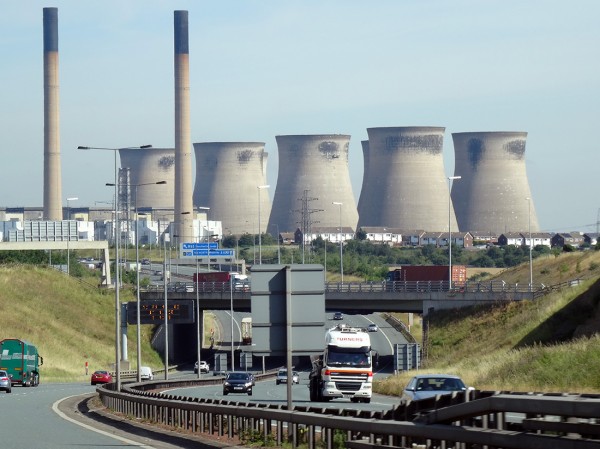 In December, most of the countries of the world will meet in Paris at the 21st annual United Nations Conference of the Parties (COP) on climate change. COP21 ‘will, for the first time in over 20 years of UN negotiations, aim to achieve a legally binding and universal agreement on climate, with the aim of keeping global warming below 2°C.’
In December, most of the countries of the world will meet in Paris at the 21st annual United Nations Conference of the Parties (COP) on climate change. COP21 ‘will, for the first time in over 20 years of UN negotiations, aim to achieve a legally binding and universal agreement on climate, with the aim of keeping global warming below 2°C.’
When the Copenhagen conference (COP15) ended in disagreement in 2009, few people thought that the increase in renewable energy would be anything like sufficient to prevent global temperatures rising more than 2°C. But things have dramatically changed in the intervening six years.
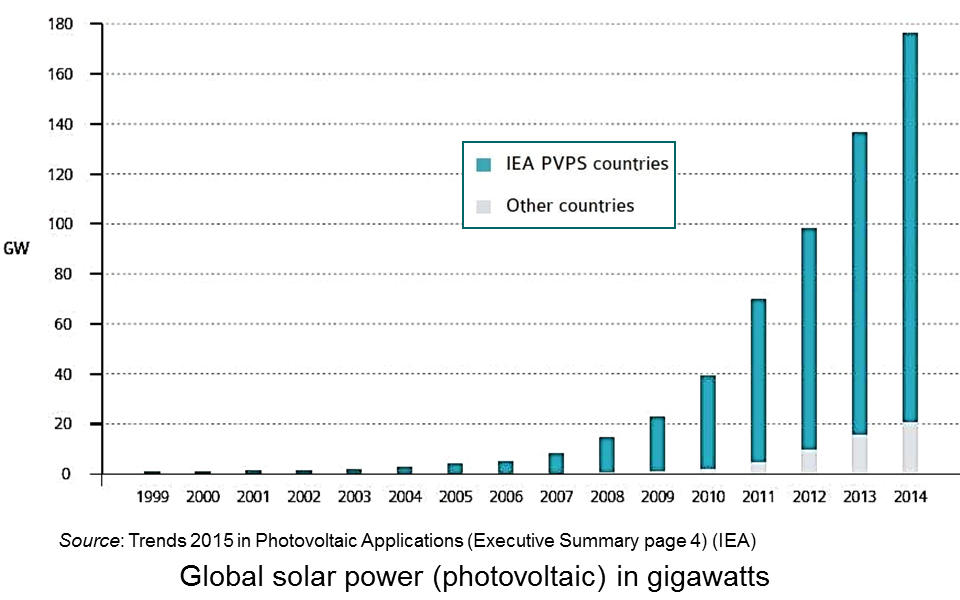 Solar power and other renewables have increased dramatically and the technology for the cleaner burning of fossil fuels, including carbon capture and storage, has developed rapidly.
Solar power and other renewables have increased dramatically and the technology for the cleaner burning of fossil fuels, including carbon capture and storage, has developed rapidly.
But perhaps the most important change has been the attitudes of governments. No longer is it a case of Europe and other developed countries moving in the direction of renewables, while developing countries, and, in particular, China and India, argue that their economic development requires a rapid expansion of coal-fired power stations. Now China, India and many other emerging countries are rapidly developing their renewable sectors. This is partly driven by the fall in the costs of renewables and partly by worries that climate change will directly effect them. Now the ‘pro-coal’ countries are in a minority.
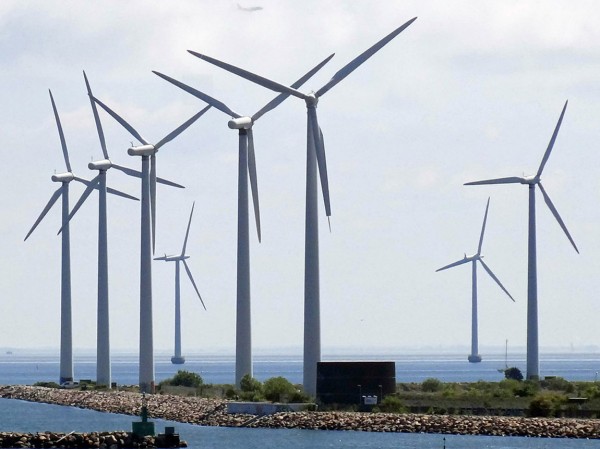 And industry is realising that significant profit is to be made from the development and installation of power plants using renewable energy. This is driving both R&D and investment. As the Telegraph article, linked below, points out, in 2009 ‘the International Energy Agency (IEA) was still predicting that solar power would struggle to reach 20 gigawatts by now. Few could have foretold that it would in fact explode to 180 gigawatts – over three times Britain’s total power output – as costs plummeted, and that almost half of all new electricity installed in the US in 2013 and 2014 would come from solar’.
And industry is realising that significant profit is to be made from the development and installation of power plants using renewable energy. This is driving both R&D and investment. As the Telegraph article, linked below, points out, in 2009 ‘the International Energy Agency (IEA) was still predicting that solar power would struggle to reach 20 gigawatts by now. Few could have foretold that it would in fact explode to 180 gigawatts – over three times Britain’s total power output – as costs plummeted, and that almost half of all new electricity installed in the US in 2013 and 2014 would come from solar’.
So is this a good news story? Will real progress be made at COP21 in Paris? The articles explore the issues.
Articles
Paris climate deal to ignite a $90 trillion energy revolution The Telegraph, Ambrose Evans-Pritchard (28/10/15)
OP21 deal critical for low-carbon economy Japan Times, Carlos Ghosn (29/10/15)
Is Solar Without Subsidies Now Viable? Oilprice.com, Michael McDonald (22/10/15)
Policy Paper
The road to Paris and beyond Centre for Climate Change Economics and Policy, Grantham Research Institute on Climate Change and the Environment (LSE), Rodney Boyd, Fergus Green and Nicholas Stern (August 2015)
Report
Energy and Climate Change International Energy Agency (October 2015)
Questions
- What are the drivers for a move from fossil fuels to renewables? Are they similar dirvers in both developed and developing countries?
- What externalities are involved in energy production (a) from fossil fuels; (b) from renewables?
- What policies can be adopted to internalise the externalities?
- What are the merits and problems of a carbon trading scheme? What determines its effectiveness in reducing CO2 emissions?
- Why are more and more investors moving into the renewable energy sector? Could this become a speculative bubble? Explain.
- How might game theory help to explain the process and outcomes of international negotiations over climate change and energy use?
 At the G7 conference in Bavaria on 7 and 8 June 2015, it was agreed to phase out the use of fossil fuels by the end of the century. But despite this significant objective, there were no short-term measures put in place to start on the process of achieving this goal. Nevertheless, the agreement contained commitments to further developments in carbon markets, elimination of fossil fuel subsidies, incentives for the development of green energy and support for developing countries in reducing hydrofluorocarbons.
At the G7 conference in Bavaria on 7 and 8 June 2015, it was agreed to phase out the use of fossil fuels by the end of the century. But despite this significant objective, there were no short-term measures put in place to start on the process of achieving this goal. Nevertheless, the agreement contained commitments to further developments in carbon markets, elimination of fossil fuel subsidies, incentives for the development of green energy and support for developing countries in reducing hydrofluorocarbons.
The agreement also sent a strong message to the 21st United Nations International Climate Change conference scheduled to meet in Paris from 30 November to 11 December 2015. The G7 communiqué states that binding rules would be required if the target was to be met.
The agreement should enhance transparency and accountability including through binding rules at its core to track progress towards achieving targets, which should promote increased ambition over time. This should enable all countries to follow a low-carbon and resilient development pathway in line with the global goal to hold the increase in global average temperature below 2°C.
But many environmentalists argue that a more fundamental approach is needed. This requires a change in the way the environment is perceived – by both individuals and politicians. The simple  selfish model of consumption to maximise consumer surplus and production to maximise profit should be rejected. Instead, the environment should be internalised into decision making.
selfish model of consumption to maximise consumer surplus and production to maximise profit should be rejected. Instead, the environment should be internalised into decision making.
What is more, there should be an integral ecology which brings together a wide range of disciplines, including economics, in analysing the functioning of societies and economies. Rather than being seen merely as a resource to be exploited, respect and care for the environment should be incorporated into our whole decision-making process, along with protecting societies and cultures, and rejecting economic systems that result in a growing divide between rich and poor.
In his latest encyclical, On care for our common home, Pope Francis considers integral ecology, not just in terms of a multidiciplinary approach to the environment but as an approach that integrates the objectives of social justice and care for the environment into an overarching approach to the functioning of societies and economies. And central to his message is the need to change the way human action is perceived at a personal level. Decision making should be focused on care for others and the environment not on the selfish pursuit of individual gain.
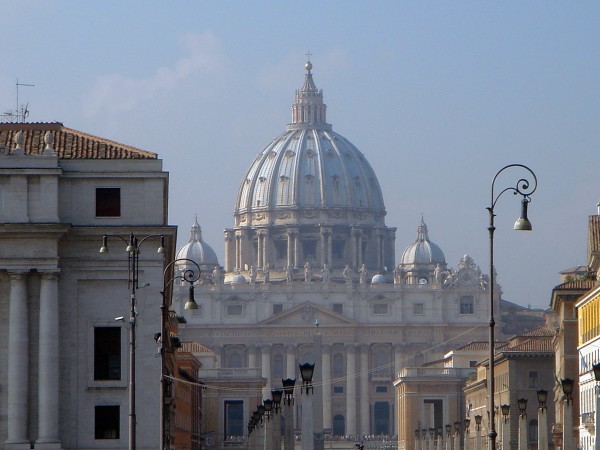 With a change in heart towards other people and the environment, what would be seen as externalities in simple economic models based on rational self-interested behaviour become internal costs or benefits. Care and compassion become the drivers for action, rather than crude self interest.
With a change in heart towards other people and the environment, what would be seen as externalities in simple economic models based on rational self-interested behaviour become internal costs or benefits. Care and compassion become the drivers for action, rather than crude self interest.
A key question, of course, is how we get here to there; how society can achieve a mass change of heart. For religious leaders, such as the Pope, the approach centres on spiritual guidance. For the secular, the approach would probably centre on education and the encouragement for people to consider others in their decision making. But, of course, there is still a major role for economic instruments, such as taxes and subsidies, rules and regulations, and public investment.
Articles
G7 leaders agree to phase out fossil fuels by end of centuryEU Observer, Peter Teffer (8/6/15)
Integral Ecology Approach Links ‘Welfare of God’s People and God’s Creation’ Catholic Register (11/6/15)
President’s Corner Teilhard Perspective, John Grim (May 2015)
In his encyclical on climate change Pope Francis reveals himself to be a master of scientific detail Washington Post, Anthony Faiola, Michelle Boorstein and Chris Mooney (18/6/15)
Pope Francis Calls for Climate Action in Draft of Encyclical New York Times, Jim Yardley (15/6/15)
Pope Francis letter on climate change leaked: Draft Vatican encyclical released three days early Independent, Kashmira Gander and Michael Day (15/6/15)
The Pope is finally addressing the gaping hole in the Judaeo-Christian moral tradition Independent, Michael McCarthy (15/6/15)
Pope Francis warns of destruction of Earth’s ecosystem in leaked encyclical The Guardian, Stephanie Kirchgaessner and John Hooper (16/6/15)
Explosive intervention by Pope Francis set to transform climate change debate The Observer, John Vidal (13/6/15)
Pope Francis’ Leaked Encyclical Draft Attributes Climate Change To Human Activity Huffington Post, Antonia Blumberg (15/6/15)
Pope Francis’ Integral Ecology Huffington Post, Dave Pruett (28/5/15)
Videos
 Pope Francis: Climate change mostly man-made BBC News, Caroline Wyatt (18/6/15)
Pope Francis: Climate change mostly man-made BBC News, Caroline Wyatt (18/6/15)
 Pope urges action on global warming in leaked document BBC News, Chris Cook (16/6/15)
Pope urges action on global warming in leaked document BBC News, Chris Cook (16/6/15)
Questions
- What do you understand by ‘integral ecology’?
- Is an integrated approach to the environment and society consistent with ‘rational’ behaviour (a) in the narrow sense of ‘rational’ as used in consumer and producer theory; (b) in a broader sense of making actions consistent with goals?
- Can cost–benefit analysis be used in the context of an integrated and cross-disciplinary approach to the environment and society?
- What types of incentives would be useful in achieving the approach proposed by Pope Francis?
- Why do many companies publicly state that they pursue a policy of corporate responsibiliy?
- To what extent does it make sense to set targets for the end of this century?
- In what crucial ways might GDP need to be adjusted if it is to be used as a measure of the success of the approach to society, the economy and the environment as advocated by Pope Francis?
 The United Nations International Panel on Climate Change (IPCC) has just published its most comprehensive report so far. It finds that ‘human activities, principally through emissions of greenhouse gases, have unequivocally caused global warming’. This has led to widespread and rapid changes in climate and biodiversity and to more extreme weather patterns, such as droughts, floods and hurricanes. What is more, the distribution of these effects is uneven, with communities who have contributed the least to current climate change being disproportionately affected.
The United Nations International Panel on Climate Change (IPCC) has just published its most comprehensive report so far. It finds that ‘human activities, principally through emissions of greenhouse gases, have unequivocally caused global warming’. This has led to widespread and rapid changes in climate and biodiversity and to more extreme weather patterns, such as droughts, floods and hurricanes. What is more, the distribution of these effects is uneven, with communities who have contributed the least to current climate change being disproportionately affected. Deep, rapid and sustained reductions in emissions would slow down the rise in global temperatures, but even with such reductions, temperatures will still exceed 1.5°C in the next few years and, even under the best-case scenario, would not fall below 1.5°C again until the end of the 21st century. Under more pessimistic scenarios, global temperatures could rise to 2.7°C above pre-industrial levels by the end of the century under an intermediate greenhouse gas emissions scenario and to 4.4°C under a very high emissions scenario. Anything above 2°C would be likely to have catastrophic effects. The longer countries wait to take action, the greater the rise in global temperatures and hence the greater the damage and the more costly it will be to rectify it.
Deep, rapid and sustained reductions in emissions would slow down the rise in global temperatures, but even with such reductions, temperatures will still exceed 1.5°C in the next few years and, even under the best-case scenario, would not fall below 1.5°C again until the end of the 21st century. Under more pessimistic scenarios, global temperatures could rise to 2.7°C above pre-industrial levels by the end of the century under an intermediate greenhouse gas emissions scenario and to 4.4°C under a very high emissions scenario. Anything above 2°C would be likely to have catastrophic effects. The longer countries wait to take action, the greater the rise in global temperatures and hence the greater the damage and the more costly it will be to rectify it. The third problem concerns the distribution of the costs and benefits of action. The major emitters of carbon are the rich countries, while the major sufferers are poor people in countries subject to drought, flooding and rising sea levels. Not surprisingly, who should cut down on emissions and pay for the mitigation necessary in many of the poorer countries is a difficult political issue, which is why it’s much easier to say what needs to be achieved overall than precisely what measures should be taken by which countries.
The third problem concerns the distribution of the costs and benefits of action. The major emitters of carbon are the rich countries, while the major sufferers are poor people in countries subject to drought, flooding and rising sea levels. Not surprisingly, who should cut down on emissions and pay for the mitigation necessary in many of the poorer countries is a difficult political issue, which is why it’s much easier to say what needs to be achieved overall than precisely what measures should be taken by which countries. The use of taxes to reduce activities with negative environmental externalities is illustrated in the diagram (click here for a PowerPoint). It takes the case of carbon emissions from coal-fired electricity generation in a large country. To keep the analysis simple, it is assumed that all electricity in the country is generated from coal-fired power stations and that there are many such power stations, making the market perfectly competitive.
The use of taxes to reduce activities with negative environmental externalities is illustrated in the diagram (click here for a PowerPoint). It takes the case of carbon emissions from coal-fired electricity generation in a large country. To keep the analysis simple, it is assumed that all electricity in the country is generated from coal-fired power stations and that there are many such power stations, making the market perfectly competitive. A simpler method for dealing with environmental externalities is ban certain activities that omit CO2. For example, in the UK there will be a ban on the sale of new petrol and diesel cars and vans from 2030 (with the exception of some low-emission hybrids until 2035). In the EU there will be a similar ban from 2035. Clearly, such measures are only suitable when there are non-emitting alternatives.
A simpler method for dealing with environmental externalities is ban certain activities that omit CO2. For example, in the UK there will be a ban on the sale of new petrol and diesel cars and vans from 2030 (with the exception of some low-emission hybrids until 2035). In the EU there will be a similar ban from 2035. Clearly, such measures are only suitable when there are non-emitting alternatives. Address by UN Secretary General, António Guterres (Transcript)
Address by UN Secretary General, António Guterres (Transcript) Climate scientists give “survival guide for humanity” in landmark UN report
Climate scientists give “survival guide for humanity” in landmark UN report Summarizing the entire IPCC report in 5 minutes
Summarizing the entire IPCC report in 5 minutes IPCC report: Here’s how we can defuse the ‘ticking time bomb’ of climate change
IPCC report: Here’s how we can defuse the ‘ticking time bomb’ of climate change










